- How to reach
- My trip to the Museum
- Galleries of the Museum
- Introduction Gallery
- Maritime History Gallery
- Boat Building Gallery
- Jobra Workshop Gallery
- Maritime Rituals Gallery
- Navigation Gallery
- Monuments on Odishan Coast Gallery
- The Outdoor Galleries – Boat Shed and Saw Mill
- Extras
- Conclusion:
“Na’anka Durabikhya“. It’s a term that let alone people outside the state of Odisha, but even many residents of the state are oblivious to. Its a great famine that is estimated to have wiped out one third of the entire population of the region in the years 1866-68.
After the famine multiple steps were undertaken to ensure better distribution of food grains from surplus regions to famished areas, which included commissioning of railway lines from Calcutta to Madras via Cuttack and multiple canal systems to provide for efficient irrigation. These canals were also utilized for transportation of goods, as they were definitely more efficient that road transport available at the time.
With the canal systems beginning to take shape a need of a canal maintenance system and boat repair workshop was felt. This need gave birth to the Jobra Workshop, which metamorphosised into The Odisha Maritime Museum in the year 2017.

How to reach
By Air: The nearest airport is in Bhubaneswar, which is about 35 kms from the museum.
By Train: Cuttack, where the museum is situated is well connected to the rest of the country by train, with Direct trains from Kolkata, Delhi, Chennai and Bengaluru.
Jobra Museum distance from Bhubaneswar is 32 km.
By Road: Cuttack could be reached by road by using the NH 16, which connects Kolkata to Chennai.
Once in Cuttack, one can reach Jobra by hiring an auto rickshaw or board a local bus (Mo Bus).
Entry fee of Jobra Museum (Odisha State Marine Museum):
- Indian adults: Rs 50
- Aquarium : Rs 45
- 3D show : Rs 60 (Rs 50 refundable security deposit for 3D glasses)
- Parking : Rs 20
Timing of Odisha State Marine Museum:
Tuesday to Sunday : 10 AM to 5 PM
Monday Closed.
Odisha state marine museum booking online : https://www.odishastatemaritimemuseum.org/
My trip to the Museum
Cuttack is a very old city with a lot of things to boast about, like the Barabati fort and Netaji’s home. The Maritime Museum is yet another feather in its hat. I had always thought of giving it a visit since, it was opened in 2017, but the opportunity came around only in the August of 2022.
To all who have been to Cuttack know that finding a parking is always a challenge in the city, but I was pleasantly surprised to see the sprawling parking space the museum had on offer. Truely the British made sure the had ample real estate while building the original workshop.
After purchasing a ticket worth Rs. 50, I made my way towards the huge entry gate of the museum. Once inside I was welcomed by a white pathway which had small windows carved into its sides. A wooden colored circular frame surrounded these windows, clearly an inspiration from the windows of ships of the Victorian era. These windows were adorned with small sculptures, that stood behind the glass wall.

Among those beautiful sculptures lied one small piece of stone, which probably is the most important artifact in that whole pathway, but was mostly ignored by other visitors.

It is the replica of the original foundation stone of the workshop, which stood on the wall with authority, just as the original did centuries ago. It had the name of Mrs G H Faulkner on it, who was the better half of Scottish Engineer George H Faulkner, the person entrusted with the workshop by the British Raj.
Galleries of the Museum
Once out of the white pathway, a green courtyard greets all, where in starts the actual museum. On the right are all the galleries arranged in order and on the left are the food court, aquarium and auditorium. I started with the right side, and entered into the Introduction Gallery.
Introduction Gallery
The very first Gallery in the Museum is dedicated to showcase the journey of the monument from a Workshop to a Museum. This place contains various photographs, write-ups and artifacts those point towards the restoration effort undertaken to the transform the 18th century workshop to a sprawling museum.
The workshop which was established in 1899, saw great utilization for the next few decades. It served the Bengal Presidency, building and maintaining everything from Canal Gates to wooden boats. It flourished and brought fame to the small settlement of Jobra, and also provided employement to the local population.

As time progressed, railways started to become the preferred choice of transport, and the boats took a back seat. Along with that bigger dockyards also came up at Paradip and Calcutta, which diverted quite a lot of repairs. By the time India gained its independence, the workshop was doing minor repairs and soon it was shut down.
It lay in dissarray for decades gathering dust and rust. It was overrun by foliage and was crumbling, waiting to become a pile of bricks. However better sense prevailed in the year 2007, and the Government decided to turn the property into a Maritime Museum. It took a painful 10 years to turn the property around and the museum was opened to the public in 2017.



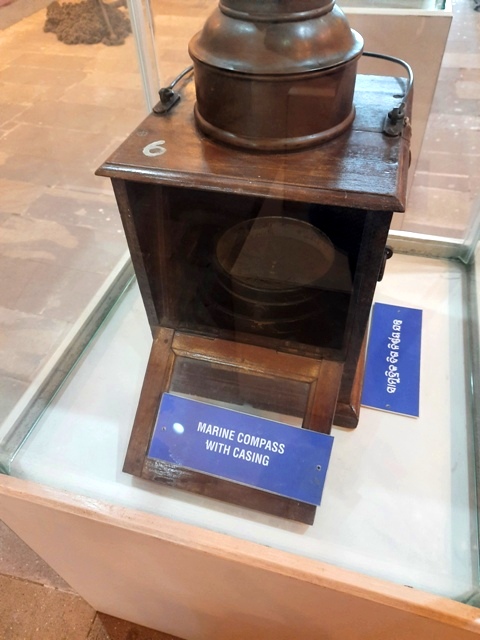

The gallery contains multiple signal lights, instruments, pictures that do a splendid job providing us a glimpse of how some activities were carried out in those days. All in all a fun beginning.
Maritime History Gallery
This Gallery was aimed at showcasing the rich history Odisha has with respect to maritime trade. With other nations, specifically Bali (Indonesia). Bali has been a very close trading partner to ancient Odisha, so much so that even now an annual fair is organised in the city of Cuttack to commemorate this relationship, called ‘Bali Jatra’.




This gallery contained wall sculptures showcasing how boats used to carry people and products from the Odisha Coast to Bali. Along with that it also showcased some art belonging to Bali, like a huge Garuda statue, manequines wearing traditional costumes of both Bali and Odisha, and two huge masks.


The gallery also had a small section dedicated to showcasing how measurements were carried out in those days, by displaying weights from that era. A sign board also described the metric system of those days.




At first glance it looked mind mindbogglingly complicated, but on looking at it for sometime, it started to make sense. It follows the same principle of MiliGram – Gram – Killogram and Litre-MiliLitre. Stuff where the kilogram system was too cumbersome, the old traders resorted to volume measurements like grains were measures using a straw basket called ‘Pachia’.
Boat Building Gallery
The next section was dedicated to depiction of how boats were built in the old days by hands. It was a huge setup containing a wooden boat and multiple manequines.
Every manequine was meticulously organised to depict a certain activity that’s needs to be carried on while making a boat. While some were busy cutting wood to shape, others were tirelessly working to fix those shaped wood, in its correct position. It felt like they were solving a puzzle, slowly filling up the space left by the initial logs fixed to give the rough outline of the boat. The creators of this gallery even threw in a small doll of a rooster, for the added effect of rural life.

Along with the huge “work in progress” boat, multiple palm leaf inscriptions were also showcased in the gallery, which described the process of boat building. I am not entirely sure of those are originals or replicas, but the inscription were pretty mesmerizing.


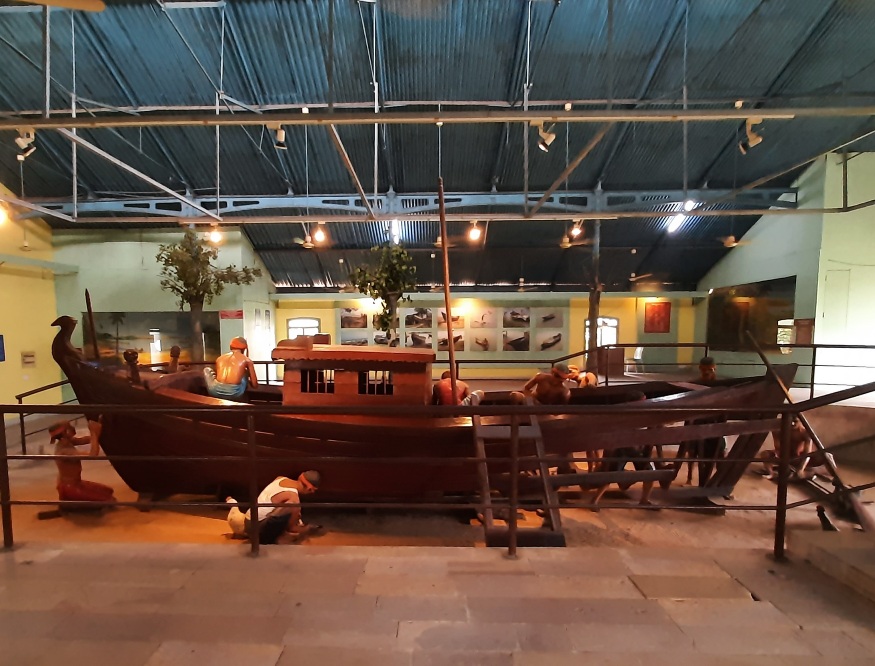

Jobra Workshop Gallery
Jobra workshop was closed down in the 60s but its equipment was never relocated. The reason might be that they were prety old, and didn’t make sense to use them in the modern era. This particular gallery houses the original tools used in the Workshop, all restored to their original state. They don’t work anymore, but do give a good sense of how they were used during the golden days of the workshop.
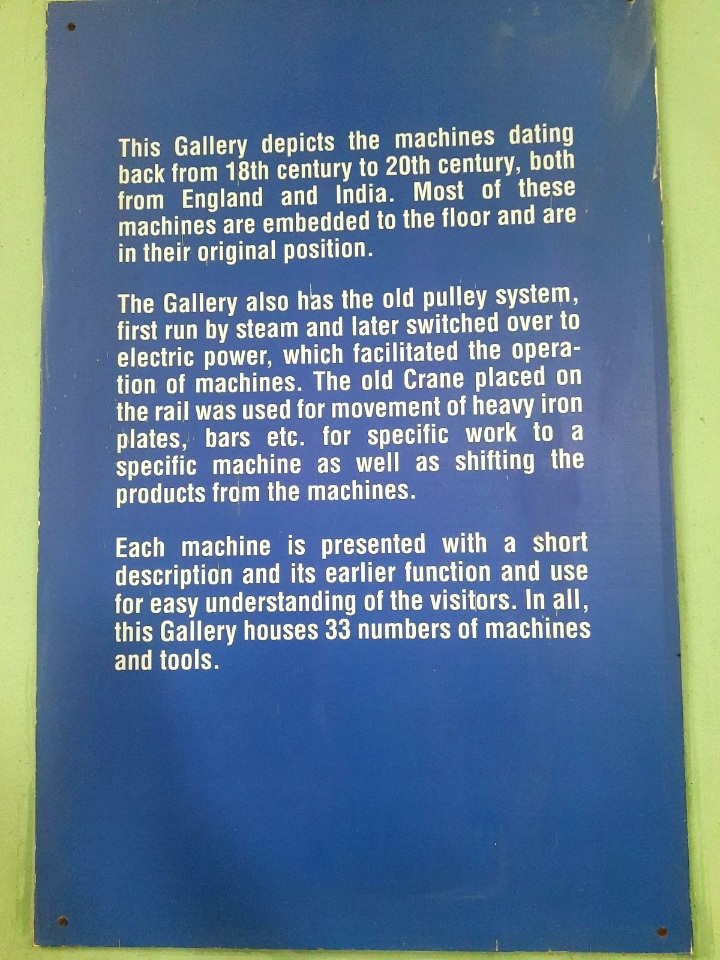
This section is the metal workshop so all bending, shaping, cutting etc. were done here. Manequins in khaki uniforms showcase how the workshop with the workers looked during its heyday. Lathes, cutters, surface shapers, weighing scales, form most of the line.




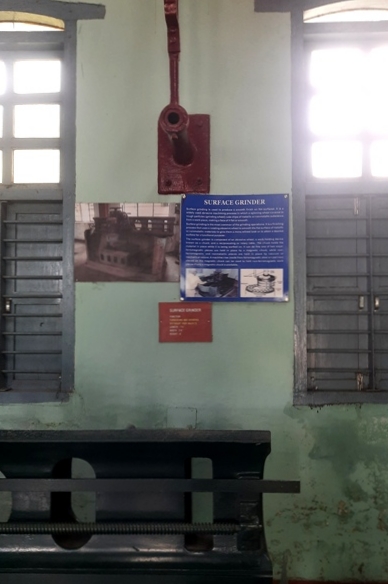
One machine with particulary drew my attention was this massive drilling machine by Nasmyth Wilson & Co, Patricroft from 1873. The size of this machine is huge, and it is just beyond my understanding how this machine was installed inside this workshop during those days. I can only imagine the kind of amazement it would have given the onlookers, when it were running.


Maritime Rituals Gallery
India is steeped in traditions and customs, which forms an integral part of our day to day lives. The next gallery attempted to showcase various traditions followed by marine traders in those golden days of the early 15th to 16th century.
This gallery features several three-dimensional models depicting the various rituals associated with sea faring vessels and sailing in this part of India.



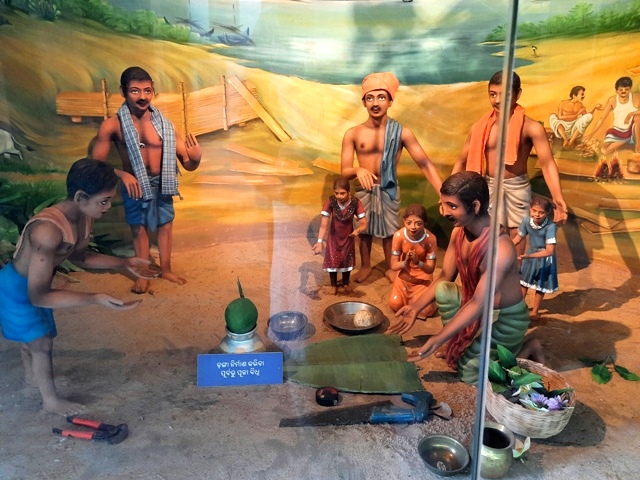
Navigation Gallery

Navigation is probabaly the most crucial job of any marine sailor, so it was no surprise when there was a gallery dedicted to this skill. This gallery had a huge collection of navigation tools from different decades and centuries. I could recongnise some instruments like vernier callipes, spirit levels and sand clock, but the rest were all new for me.

Not only the instruments, the gallery also showcased various maps and charts from the old age, and ample description of what each instrument was used for. This is a treasure trove for all history buffs.




Monuments on Odishan Coast Gallery
There are quite a few monuments along the Odisha cost associated with maritime, these sections show scale models of some of these. Among many old monuments showcased, I zeroed in on the old warehouse of Gopalpur, which is still standing and I had witnessed it first hand in my trip to Gopalpur sea beach earlier in the year.

The Outdoor Galleries – Boat Shed and Saw Mill
Boat shed
A tour of a maritime museum is never over without a walk through of multiple types of boats. India has had a long history of indigenous boats and this shed, puts forth an excellent effort in showcasing all those designs. Here I got to see different types of boats from Odisha and other states. The list includes the famous Shikara of Kashmir.



Saw Mill
Since in those days all boats arts made of wood, it only made sense to have a saw mill, to cut and shape wood within the workshop. And that vet section exists outside the main building. This didn’t make much sense to me, but if the British did this, may be that had some thoughts on their mind, which I am not able to comprehend.
This area also has a few original stuff to showcase, like the original Pulley, which was used to pull boats from the river to the dry dock and canons, used to defend this workshop from attacks.


A huge furnace also graces this open area which was used to fire up the metals before bending/shaping. Though most of the furnace is now closed, but the size of this thing is enough to let us know the amount of work it has done in the past.


Extras
Park
A manicured lawn with seating arrangements cover the entire area between the boundary of the museum and the main building. Many families sit here idling their Sunday afternoons.


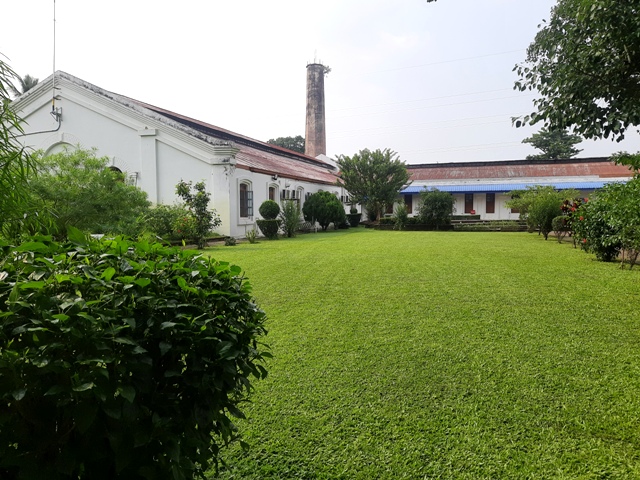
Children’s Park
Since this is a place where many families come to spend time, a small children’s park has been put up, with slides and swings to let the kids play and enjoy themselves.
Aquarium
A decent size aquarium has also been setup within the premises of the museum, as an added attraction for children. It requires an extra Rs 20 as entry fee.
SFX Hall
A small theater is also setup at the venue, where visitors can pay an additional amount to watch a 3D show regarding the museum and is history.
Food court and souvenir shops:
A food court and souvenir shop also exist within the premises of the museum. I didn’t visit any of them though.
Conclusion:
The Odisha Maritime Museum is not only a good museum but also an inspiring story. A story of resurgence, of a once forgotten monument, to its rise in becoming one of the best destinations in the city. Its probably one of the best uses of colonial architecture, as this might just be the only maritime museum in the world, that’s housed in a colonial workshop.

